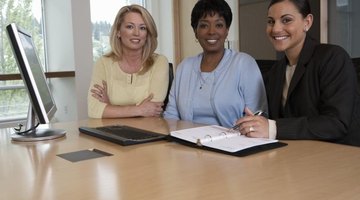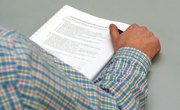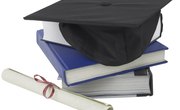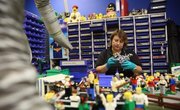A successful resume workshop should explain the different types of resumes with specific examples. It should also discuss how to include the most important elements that highlight a job candidate's qualifications and accomplishments.
Provide Visual Aids and Handouts
Make sure you have all your materials before beginning the session. If you have access to the right technology, create a presentation using a program like PowerPoint so your audience can follow along as you speak. If not, utilize your local print shop to create visual aids on poster board. Remember that your presentation or visual aids should only contain highlights of your session, not every detail. Handouts covering important points allow the audience to take something home. Finally, print out sample resumes: one using chronological organization, one using functional organization and one using a combination of the two.
Describe the Sections
During the presentation, start with the basics. The University of California, Davis' Internship and Career Center lists three essential sections in addition to the heading: education, experience and skills. Define each section and teach the audience what to include. For example, the education section highlights a candidate’s degrees and academic accomplishments, such as making the dean’s list or a high GPA. The work experience section shows the candidate’s job history and career accomplishments, such as high sales numbers or leading a project. It is important to emphasize accomplishments, not just job duties. The skills section points out job-related skills that might not show up anywhere else, such as proficiency with computer programs or languages spoken. Candidates should structure the resumes to highlight their best qualifications. Other sections, such as professional organizations, may also be included.
Explain Chronological Versus Functional
Describe different organizational patterns and their benefits. The UC Davis' career center points out three possibilities -- chronological, functional and a combination of the two. The chronological structure works best for those who are continuing their careers and whose previous experience is their best selling point, such as someone moving from management at one company to management at a different company. It lists the candidate's experience in order from most recent to least recent. The functional structure is ideal for those beginning new careers, such as recent college graduates, who want to show that they have the necessary skills and talent even if they lack relevant job experience. It is organized by skill set. Others prefer to combine the two approaches to show that while they are changing career paths, they do have relevant work experience. This approach emphasizes skills but still contains a chronological employment history including accomplishments at each position.
Give Formatting Tips
Provide your audience with general formatting tips. The University of South Carolina reminds users to avoid generic templates and to use 10- or 12-point Times New Roman or Arial fonts. You can also explain how to use underlining, bold, italics and bullets to highlight important points. The resume should have plenty of white space and appeal to the eye. The UC Davis career center says resumes should not be more than one page long, for someone without much experience, and never longer than two pages. Your audience should hold their resumes at arm’s length to see their works’ visual impact. Remind them to use action verbs to give their work panache. For example, they should say “I directed” an activity instead of “I was the director.” Finally, recommend they use 20-pound resume paper for physical copies and the correct type of file for online submissions. Reserve time at the end of the workshop for a question-and-answer session.
Related Articles
References
Writer Bio
Residing in Sault Ste. Marie, Mich., Buddy Shay has been in higher education since 2003 with experience in the classroom and in academic support. He holds a Master of Arts in English. Shay is also a certified practitioner of the MBTI personality instrument and has previous experience working with secondary students.











